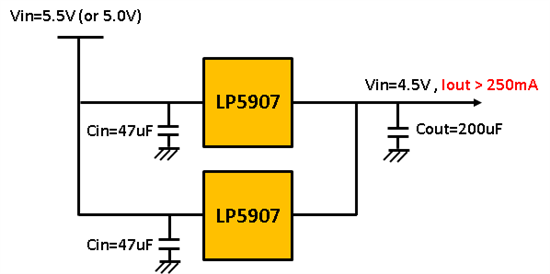Hi Team,
Our customer would like to improve capability of supply of LP5907.
This plan is still at the stage of hypothesis but they may need "Iout > 250mA".
And, they would like to use LP5907 because this device is very low noise.
Therefore, they are studying about parallel operation now.
Can you recommend the following figure?
Please review this and let me know if you have any advice.
Regards,
Kanemaru


